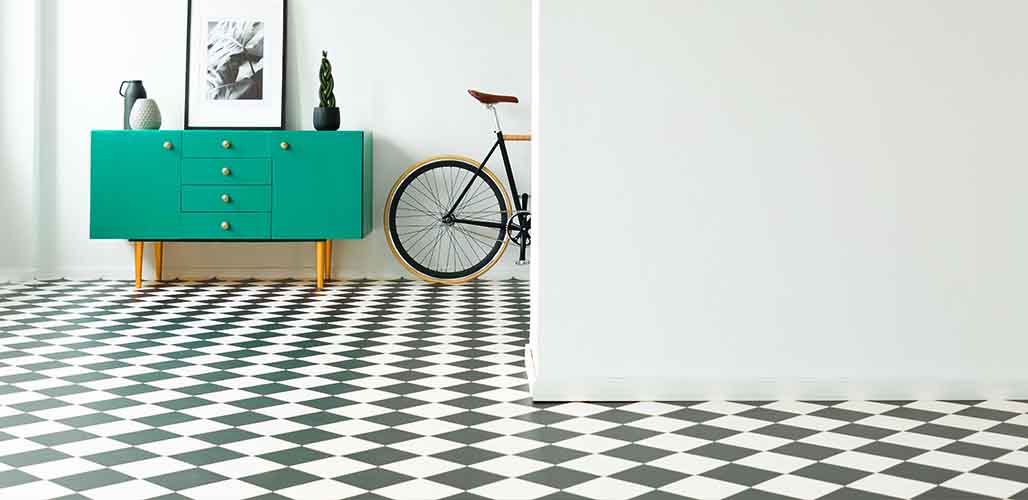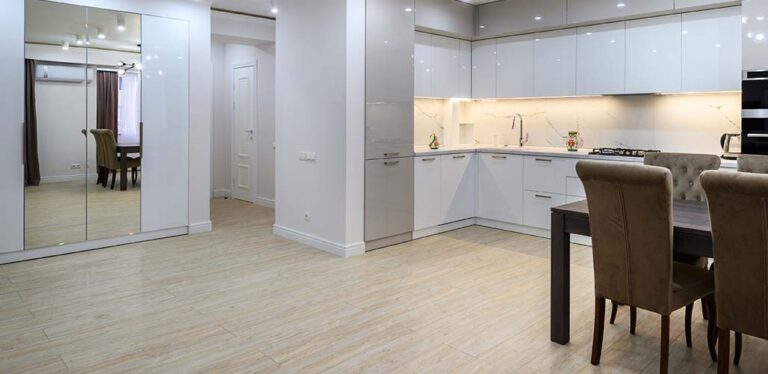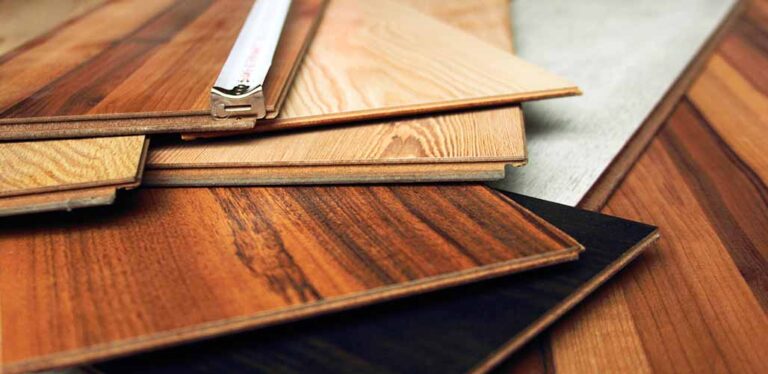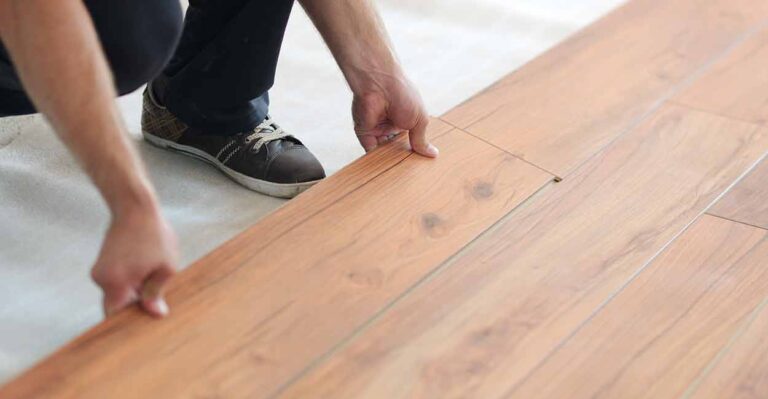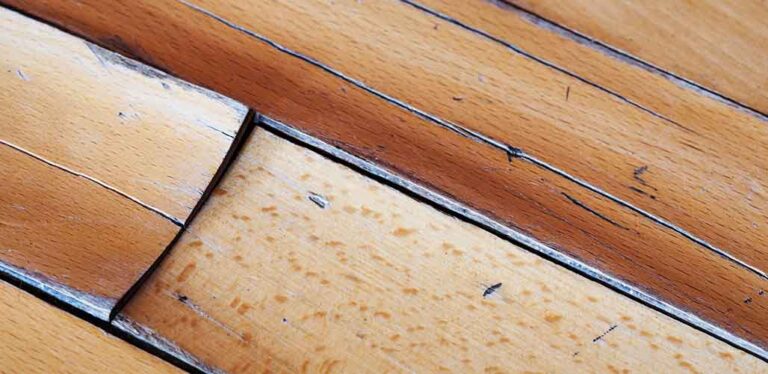Is Linoleum Cheaper than Tile?
Is linoleum cheaper than tile? When I was choosing the right floor for my kitchen, tiles and linoleum were the two major options. Both are popular, durable flooring materials, but linoleum took the edge for me, because it’s easier to clean, and was cheaper in terms of overall maintenance and installation. In this guide, I’ll take a closer look at whether linoleum or tiles are cheaper to install and maintain, as well as the major pros and cons of linoleum in general to help you decide whether it’s right for you, just because it’s generally cheaper.
Contents
- Is linoleum cheaper than tiles?
- Does lino last as long as tiles?
- Is linoleum cheaper to maintain than tiles?
- Why I changed my tile flooring to linoleum
- Pros of linoleum floors
- Cons of linoleum floors
Is Linoleum Cheaper than Tile?
All flooring types will vary in price depending on their quality, design, and form/material. This includes tile and lino flooring. Both tiles and linoleum come in various levels of quality. Cheaper versions of both are available. And, the more complex the design, the more expensive they can be. The same is true of the material or form you choose. Tiles made from luxury materials will be more expensive, and linoleum cut to smaller shapes can be more expensive than sheet types.
So, in simple terms, the answer to our question is a bit more complicated than it first seems. As a general rule, linoleum is cheaper than tiles, but if you’re choosing a good quality lino, tiles might not be much more expensive. However, linoleum is also generally cheaper to install. It’s very easy to install, so most people can do it themselves. Tiles can be a bit harder, so they can require professional help, which will add to your overall cost.
Does Linoleum Last as Long as Tiles?
One of the major points to consider when deciding between lino and tiles is durability. Linoleum might be cheaper upfront and to install, but if you have to replace it more frequently, your costs will soon add up.
Tiles are known for their durability. As a general rule, they’ll last many years. And, even if one of them becomes chipped or smashed, you can often replace the affected tiles, rather than your whole floor, keeping costs down.
Linoleum is quite a durable floor type, but it can be vulnerable in homes with pets that like to dig floors. It is softer than tiles, so sharp things can gouge at the surface. In most cases, you will need to replace linoleum completely, but if you’re particularly handy, you might be able to replace small patches. So, you need to consider your lifestyle. For homes with pets, tiles may be a cheaper long-term option, since you might need to replace lino more frequently.
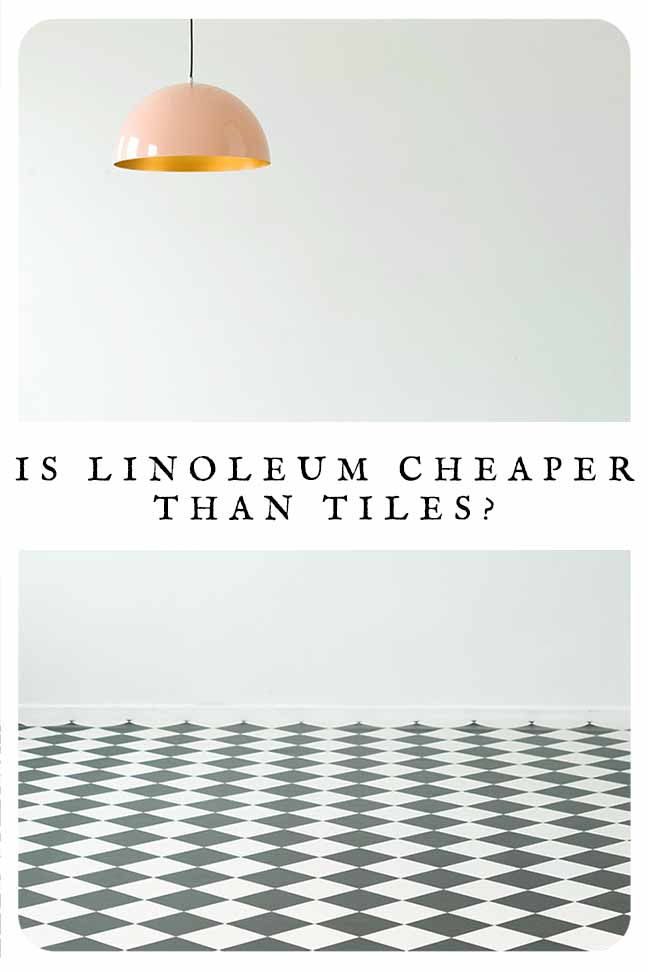
Is Linoleum Cheaper to Maintain than Tile?
I’ve already taken a look at upfront costs, installation costs, and potential replacement costs. But, another key factor you should consider is the cost of maintaining each of these floor types.
Both linoleum and tiles are quite low maintenance floor types. In both cases, you can clean them by sweeping them regularly. Tougher stains can be dealt with by using soap, water and elbow grease. However, tiles can require more maintenance, as they need sealing and buffing to stay looking their best. You will also need to pay special attention to the grout between the tiles. You might need to fork out for specific cleaning products if your grout is particularly dirty or stained.
How A Simple Change Of My Flooring With Linoleum Changed My Daily Life
Working from home with my old tiles, I spent hours on my hands and knees trying to clean the grout. I was tired of having to sweep and mop the floors every day. I also had issues with allergies and asthma, but I didn’t know if it was related.
So, I contacted a local company specializing in home remodeling, and they suggested that changing my tile floors to linoleum might help alleviate my symptoms. I scheduled an appointment with them, and they came out and redid the floors in our kitchen, living room, and dining room.
I’d heard about linoleum before contacting them, but hadn’t researched the flooring much until that point. After learning about its benefits, I decided it was right for me, and my cleaning regimes were much easier. All I needed was a damp cloth or sponge – no more daily mopping to keep grout from going black!
Advantages of Linoleum Flooring
You might want to consider linoleum flooring if you’re in the market for a new floor. This material has grown in popularity recently, especially with the variety of patterns and styles available and its eco-friendliness and durability. Here are some of the major advantages of lino floors.
Easy to Repair
Since linoleum is so easy to install, it’s also easy to replace. And, if you’re really great with your DIY, you can repair specific patches of your floor, rather than replacing it all. Simply sew together the seams of your flooring, or glue the new patch down tight against the older part. You can fix dents or scratches by rubbing them with sandpaper or using linseed oil.
Economical
Linoleum flooring is an excellent choice for homeowners because it is affordable. You can purchase it for under $1 per square foot, which makes it a much cheaper upfront option than tiles or laminate floors.
Durable in Most Homes
In most homes, laminate can last very long times. It can be prone to scratches and gouges, but if you’re in a home without pets or young children, it can stay looking its best for a long time.
It’s Naturally Antibacterial
Linoleum flooring is an eco-friendly material that is naturally antibacterial. As a result, linoleum won’t contribute to the spread of bacteria as tile floor surfaces can. Linoleum will be an excellent choice for your living space if you have a family member with allergies or asthma.
It’s Quiet
Linoleum flooring is an excellent choice for any home. Not only does it offer ease of maintenance, but the material is quiet when walking on. Although pets and small children might damage it more easily than tiles, it will be easier for them to walk on as it is generally less slippery.
Disadvantages of Linoleum Flooring
Despite these advantages, there are some downsides to lino flooring that you should consider before choosing it. Here are the major drawbacks of linoleum floors:
They Get Dirty Easily in Certain Rooms
Linoleum is most popular in kitchens and bathrooms, but it is porous and doesn’t protect against spills and stains well. Spills can go through the floor’s surface and into the subfloor, making them difficult to remove. This can lead to odors that are hard to eliminate over time. Tiles don’t tend to have this problem.
Vulnerable to Light
Linoleum flooring can be discolored by exposure to sunlight. This can be a problem for linoleum flooring in rooms with a lot of natural light or in places with windows. And, it can mean you want to replace your flooring more often to keep it looking its best. So, if the color and vibrancy of your flooring is important to you, tile flooring might work out cheaper in the long run.
It Can Look Bad if Installed Wrong
Linoleum is a pretty easy floor to install. But, you might miss certain steps that professionals would complete, like adding sealants and protecting the subfloor. Improper installation can lead to damage which is expensive to fix. And, your lino flooring can warp and buckle when installed over inadequate moisture barriers, such as concrete slabs, without proper vapor barrier protection. Replacing flooring like this can be more expensive in the long run, even if you initially saved money on your installation.
Is Linoleum Cheaper than Tile? A Summary
Whether you’re trying to repair or build a new home, the question of tiles vs linoleum might arise. If you feel your budget will not stretch to tiles, linoleum is a great option. But, bear in mind that it can work out more expensive in the long run, particularly if it’s exposed to sunlight, or if you have pets.

